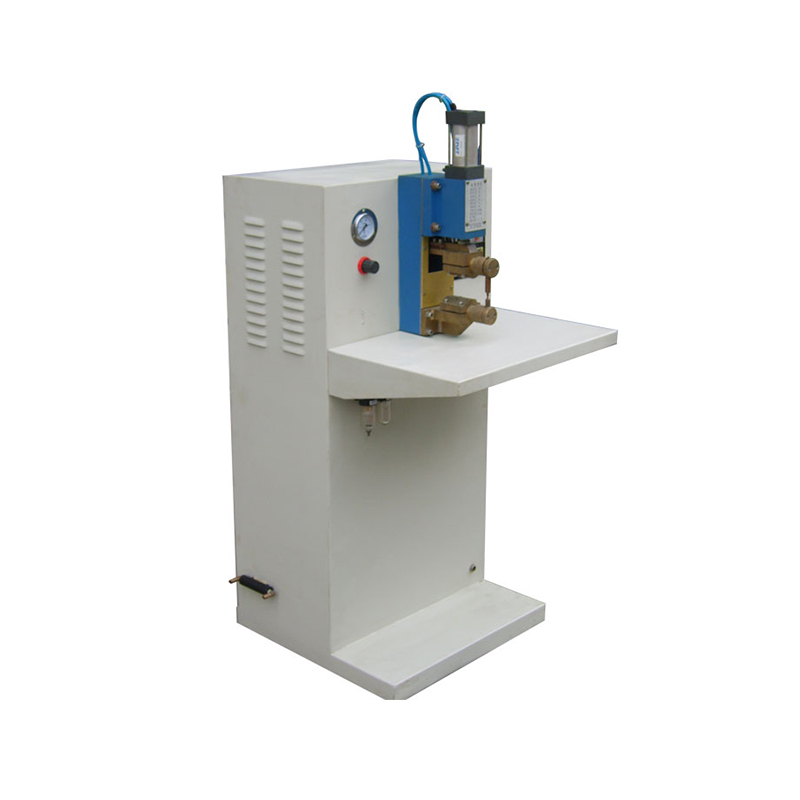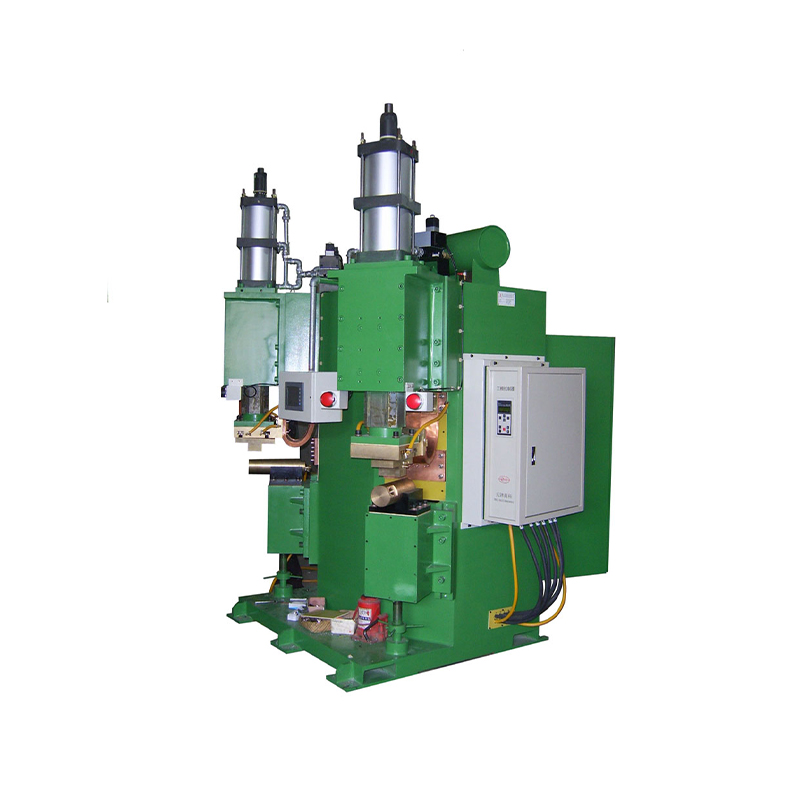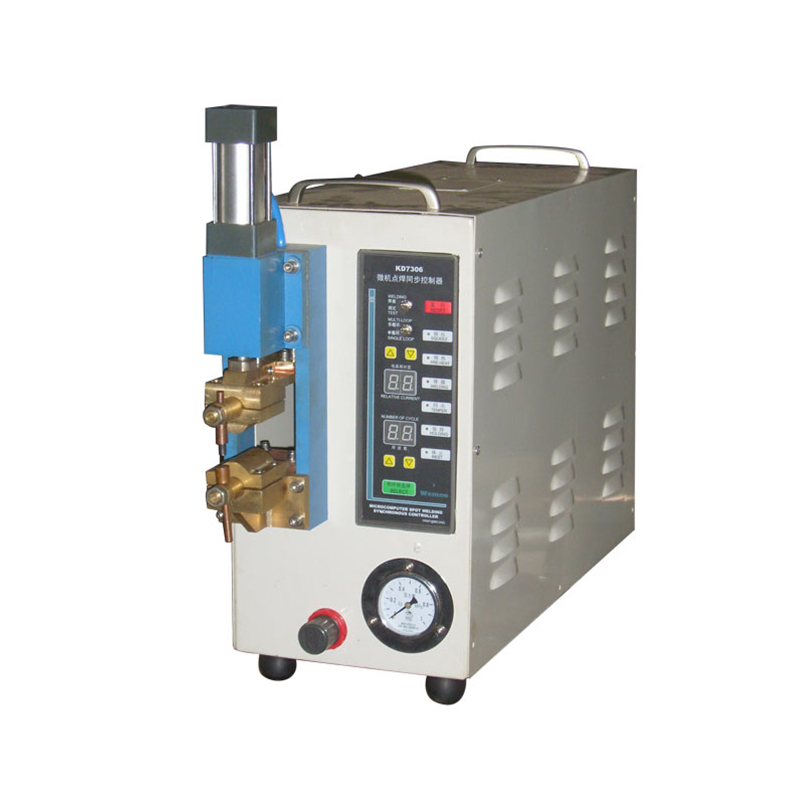How is the welding capability of lamp bracket welding machine on lamp brackets with complex shapes?
Release Time : 2025-06-18
With the increasing diversification and personalized needs of modern lighting design, the shapes of lamp brackets are becoming more and more complex. Traditional manual welding methods often face many challenges when dealing with these complex shapes, such as insufficient precision, low efficiency, and poor consistency. The lamp bracket welding machine, with its advanced technology and highly automated characteristics, can effectively cope with these problems and ensure high-quality welding of lamp brackets with complex shapes.
1. High-precision control and intelligent programming
Lamp bracket welding machines are usually equipped with high-precision control systems and intelligent programming functions, which enable them to achieve accurate welding path planning when dealing with lamp brackets with complex shapes. By using CAD/CAM software, operators can import the design drawings of the lamp bracket into the welding machine, and the system will automatically generate the optimal welding path and automatically adjust the welding parameters according to factors such as material type and thickness.
For example, when welding a lamp bracket with a multi-angle bend and curve structure, the welding machine can accurately weld along each bend point and curve according to the preset program to ensure that the weld position is accurate. In addition, some high-end models are equipped with a visual recognition system that can detect the weld position in real time during the welding process and make fine adjustments to further improve the welding accuracy.
2. Application of multi-axis linkage technology
In order to better meet the welding needs of lamp brackets with complex shapes, many lamp bracket welding machines use multi-axis linkage technology. This technology allows the welding head to move freely in multiple directions, thereby achieving accurate coverage of various complex geometries. Common configurations include three-axis (X, Y, Z) or five-axis (X, Y, Z, A, B) motion systems, where the A and B axes are used to rotate and translate the welding head, respectively, to achieve the best welding angle.
Multi-axis linkage technology not only improves the flexibility of welding, but also significantly reduces the dead angle area during welding, ensuring that every detail can be properly handled. This feature is particularly important for lamp brackets that need to perform welding operations in narrow spaces, which ensures that high-quality welds can be obtained even in the most difficult-to-reach locations.
3. Advanced welding process
The lamp bracket welding machine adopts a series of advanced welding processes, such as laser welding, TIG welding (tungsten inert gas shielded welding), MIG welding (metal inert gas shielded welding), etc. These processes have their own advantages and are suitable for different materials and application scenarios. For example, laser welding is very suitable for processing thin-walled structures and precision parts due to its high energy density and small heat-affected zone; while TIG welding is widely used in the manufacture of stainless steel lamp brackets due to its excellent welding quality and beautiful weld appearance.
For the welding task of complex-shaped lamp brackets, the lamp bracket welding machine can select the most suitable welding process according to specific requirements and optimize the welding effect in combination with the corresponding parameter settings. For example, when welding lamp brackets with multiple different material joints, different welding modes can be switched to ensure that the connection between each material is firm and reliable, while maintaining the beauty and functionality of the overall structure.
4. Flexible fixture design
In order to ensure that the complex-shaped lamp bracket remains stable and in the correct position during the welding process, the lamp bracket welding machine is usually equipped with a flexible and adjustable fixture system. These fixtures can be customized according to the specific size and shape of the lamp bracket to ensure that the workpiece will not be displaced or deformed during the entire welding process. In addition, some advanced models also have the function of quickly changing fixtures, which enables the equipment to switch from one product to another in a short time, greatly improving the flexibility and responsiveness of the production line.
In actual applications, for lamp brackets with particularly complex shapes, multiple fixtures may be used to work together to fix different parts of the workpiece to ensure absolute stability during the welding process. This not only improves the welding quality, but also effectively avoids welding defects caused by workpiece shaking.
5. Intelligent monitoring and fault diagnosis
The lamp bracket welding machine is also equipped with an intelligent monitoring system and fault diagnosis functions, which is particularly important for processing lamp brackets with complex shapes. Through built-in sensors and data acquisition modules, the system can monitor various parameters in the welding process, such as current, voltage, temperature, etc. in real time, and upload these data to the central control system for analysis. Once an abnormal situation is found, the system will immediately issue an alarm and take corresponding measures, such as suspending welding, adjusting parameters, or prompting maintenance personnel to check.
In addition, the predictive maintenance function based on big data analysis can help companies detect potential problems in advance, develop preventive maintenance plans, and avoid downtime losses caused by sudden failures. This intelligent management mode not only improves welding efficiency, but also extends the service life of equipment and reduces long-term operating costs.
In summary, the lamp bracket welding machine has demonstrated excellent capabilities in processing lamp brackets with complex shapes. With high-precision control and intelligent programming, multi-axis linkage technology, advanced welding technology, flexible fixture design, and intelligent monitoring and fault diagnosis functions, they can not only meet diverse design needs, but also significantly improve product quality and production efficiency.
1. High-precision control and intelligent programming
Lamp bracket welding machines are usually equipped with high-precision control systems and intelligent programming functions, which enable them to achieve accurate welding path planning when dealing with lamp brackets with complex shapes. By using CAD/CAM software, operators can import the design drawings of the lamp bracket into the welding machine, and the system will automatically generate the optimal welding path and automatically adjust the welding parameters according to factors such as material type and thickness.
For example, when welding a lamp bracket with a multi-angle bend and curve structure, the welding machine can accurately weld along each bend point and curve according to the preset program to ensure that the weld position is accurate. In addition, some high-end models are equipped with a visual recognition system that can detect the weld position in real time during the welding process and make fine adjustments to further improve the welding accuracy.
2. Application of multi-axis linkage technology
In order to better meet the welding needs of lamp brackets with complex shapes, many lamp bracket welding machines use multi-axis linkage technology. This technology allows the welding head to move freely in multiple directions, thereby achieving accurate coverage of various complex geometries. Common configurations include three-axis (X, Y, Z) or five-axis (X, Y, Z, A, B) motion systems, where the A and B axes are used to rotate and translate the welding head, respectively, to achieve the best welding angle.
Multi-axis linkage technology not only improves the flexibility of welding, but also significantly reduces the dead angle area during welding, ensuring that every detail can be properly handled. This feature is particularly important for lamp brackets that need to perform welding operations in narrow spaces, which ensures that high-quality welds can be obtained even in the most difficult-to-reach locations.
3. Advanced welding process
The lamp bracket welding machine adopts a series of advanced welding processes, such as laser welding, TIG welding (tungsten inert gas shielded welding), MIG welding (metal inert gas shielded welding), etc. These processes have their own advantages and are suitable for different materials and application scenarios. For example, laser welding is very suitable for processing thin-walled structures and precision parts due to its high energy density and small heat-affected zone; while TIG welding is widely used in the manufacture of stainless steel lamp brackets due to its excellent welding quality and beautiful weld appearance.
For the welding task of complex-shaped lamp brackets, the lamp bracket welding machine can select the most suitable welding process according to specific requirements and optimize the welding effect in combination with the corresponding parameter settings. For example, when welding lamp brackets with multiple different material joints, different welding modes can be switched to ensure that the connection between each material is firm and reliable, while maintaining the beauty and functionality of the overall structure.
4. Flexible fixture design
In order to ensure that the complex-shaped lamp bracket remains stable and in the correct position during the welding process, the lamp bracket welding machine is usually equipped with a flexible and adjustable fixture system. These fixtures can be customized according to the specific size and shape of the lamp bracket to ensure that the workpiece will not be displaced or deformed during the entire welding process. In addition, some advanced models also have the function of quickly changing fixtures, which enables the equipment to switch from one product to another in a short time, greatly improving the flexibility and responsiveness of the production line.
In actual applications, for lamp brackets with particularly complex shapes, multiple fixtures may be used to work together to fix different parts of the workpiece to ensure absolute stability during the welding process. This not only improves the welding quality, but also effectively avoids welding defects caused by workpiece shaking.
5. Intelligent monitoring and fault diagnosis
The lamp bracket welding machine is also equipped with an intelligent monitoring system and fault diagnosis functions, which is particularly important for processing lamp brackets with complex shapes. Through built-in sensors and data acquisition modules, the system can monitor various parameters in the welding process, such as current, voltage, temperature, etc. in real time, and upload these data to the central control system for analysis. Once an abnormal situation is found, the system will immediately issue an alarm and take corresponding measures, such as suspending welding, adjusting parameters, or prompting maintenance personnel to check.
In addition, the predictive maintenance function based on big data analysis can help companies detect potential problems in advance, develop preventive maintenance plans, and avoid downtime losses caused by sudden failures. This intelligent management mode not only improves welding efficiency, but also extends the service life of equipment and reduces long-term operating costs.
In summary, the lamp bracket welding machine has demonstrated excellent capabilities in processing lamp brackets with complex shapes. With high-precision control and intelligent programming, multi-axis linkage technology, advanced welding technology, flexible fixture design, and intelligent monitoring and fault diagnosis functions, they can not only meet diverse design needs, but also significantly improve product quality and production efficiency.







